The Stannard Rock Lighthouse, often dubbed the “most isolated place in the world”, is located in the northern part of Lake Superior, off the Keweenaw Peninsula in Michigan, USA. Built in 1882, this lighthouse boasts a visibility range of up to 24 miles (approximately 38.6 km) and sits atop a large reef.
According to Amusing Planet, the nearest land to Stannard Rock is Manitou Island, located about 40 km to the northwest of the lighthouse. This may explain why Stannard Rock is considered the most remote lighthouse in the United States and the world.
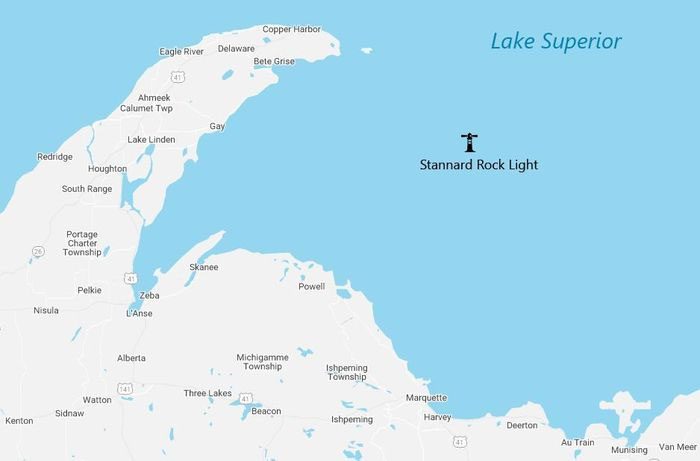
Location of Stannard Rock Lighthouse on the map.
The reef where the lighthouse sits was discovered by Captain Charles C. Stannard in 1835. Stannard was astonished to find an unidentified obstruction far from shore in the midst of clear waters. The reef is submerged only about 1.2 meters below the surface, and the captain recognized the danger this invisible mountain posed to passing ships.
As maritime traffic in the area increased, the potential hazards of the reef also grew. The U.S. Lighthouse Board believed that navigation lights were needed for this area, but they were uncertain whether a structure could withstand the storms of Lake Superior, known for its fierce weather.
In 1868, as a test, the board placed a stone slab approximately 3.6 meters in diameter at the shallowest point of the reef, erecting a 6-meter tall daymark above it. A few years later, after observing that this structure remained intact through storms and ice, engineers became confident that they could build a lighthouse on the reef discovered by Charles C. Stannard.
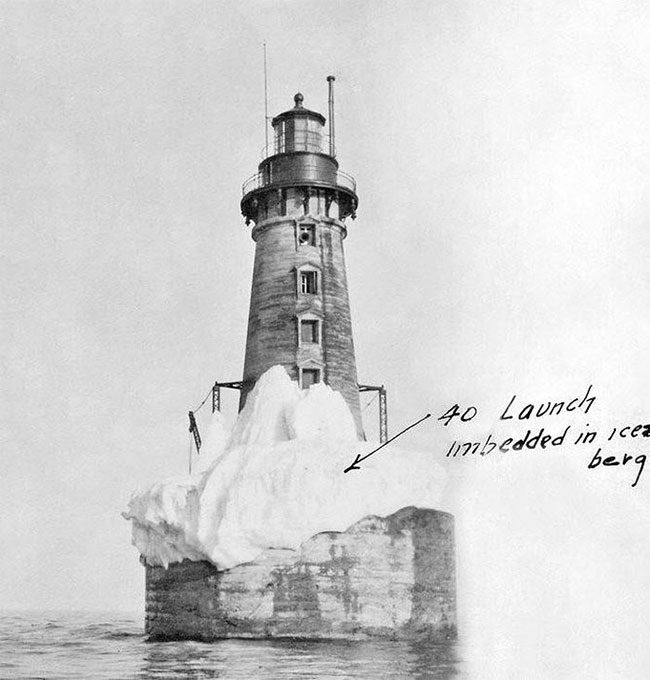
The tower was finally completed and lit for the first time in 1882.
It took five years of hard work for engineers to complete the construction of this lighthouse. Each spring, they returned to the reef to fix damage caused by the previous winter’s storms. Sometimes, workers complained that for five years they had done more repairs than construction. During the summer, work was often stalled due to bad weather. Between 1878 and 1879, the construction team was able to work only 61% of the available time due to storms.
The tower was finally completed and lit for the first time in 1882. It stands 23.7 meters tall with seven levels, including a kitchen, bedrooms, a library, an observation room, and a telescope. A total of 240,000 tons of iron, steel, and stone were used, allowing the lighthouse to withstand the test of time for over a century.
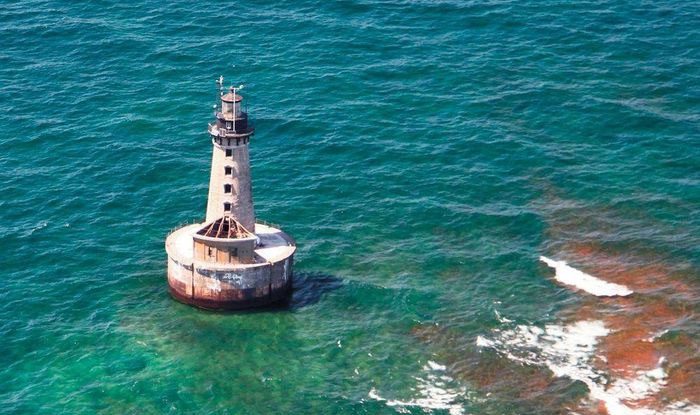
Life at this remote outpost is incredibly lonely and harsh.
Life at this remote outpost is incredibly lonely and harsh. The keepers of Stannard Rock Lighthouse were mostly single young men with no wives or girlfriends on the mainland to ease their homesickness. The location is so remote that U.S. Coast Guard personnel today still share the saying: “If you cause enough trouble, they’ll send you straight to Stannard Rock.”
Louis Wilks, the lighthouse keeper from 1936 to 1956, set a record by living on Stannard Rock for 99 consecutive days. This remains an unmatched achievement, as each keeper was allowed to go ashore only once every three weeks.
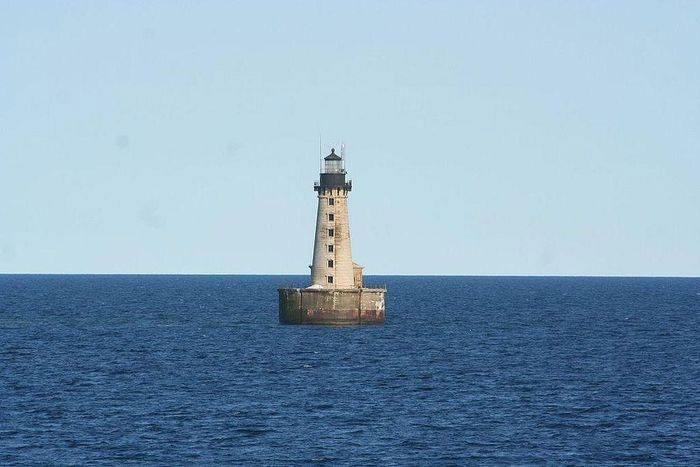
The extreme loneliness is what lighthouse keepers face.
The extreme loneliness is what these lighthouse keepers must confront. Daily, they would wander the tower, unable to see land, surrounded only by the cries of seagulls and the roaring waves. One keeper even threatened to swim to shore if there was no boat to pick him up immediately. There are even rumors that one person went insane and had to be restrained when taken away.
Severe storms created waves as high as 9 meters crashing against the tower, powerful enough to knock objects off shelves and send dishes flying off tables. If they had to go outside during heavy winds, the keepers had to tie themselves with ropes to avoid being blown away.
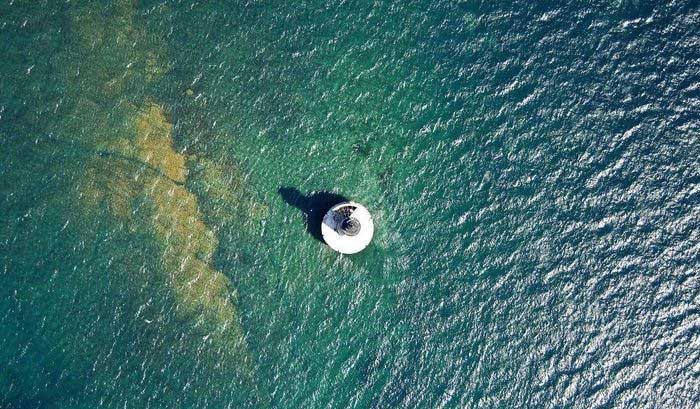
Here, land is not in sight, only the cries of seagulls.
As spring arrived, the lighthouse keepers had to use large axes to break through thick ice and snow. In 1913, the entire tower was covered in over 3.6 meters of ice. A rescue team of 12 took a week to free the trapped keepers inside.
However, the real tragedy at Stannard Rock occurred on the night of June 18, 1961. Around 9:30 PM, over 3,700 liters of gasoline stored for the generator exploded, shaking the entire tower. The explosion ignited the propane room and coal bunker with such intensity that a portion of the limestone near the lighthouse melted.
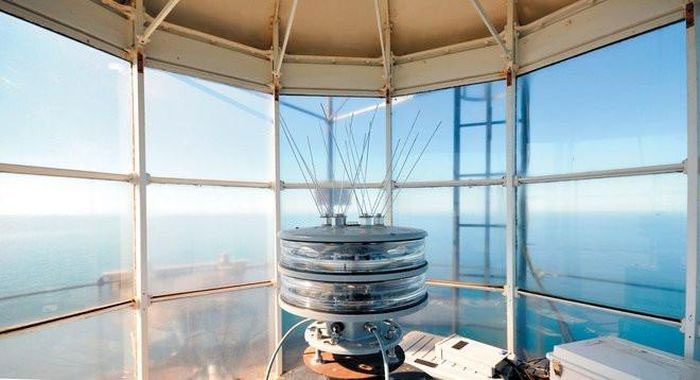
This site is closed to visitors; tourists can only observe from boats or planes.
A 35-year-old engineer lost his life, and three others were injured during the incident. The three men hoped to be rescued soon. However, it took two days before a Coast Guard patrol boat passed by and noticed that the light was not functioning and could not reach the keepers via radio. Upon reaching the lighthouse, the Coast Guard found three survivors who had broken a door to climb out onto a windswept balcony, using a tarpaulin for shelter.
A year later, the lighthouse was automated. The site is now closed to visitors, meaning tourists can only observe it from boats or planes passing by.


















































